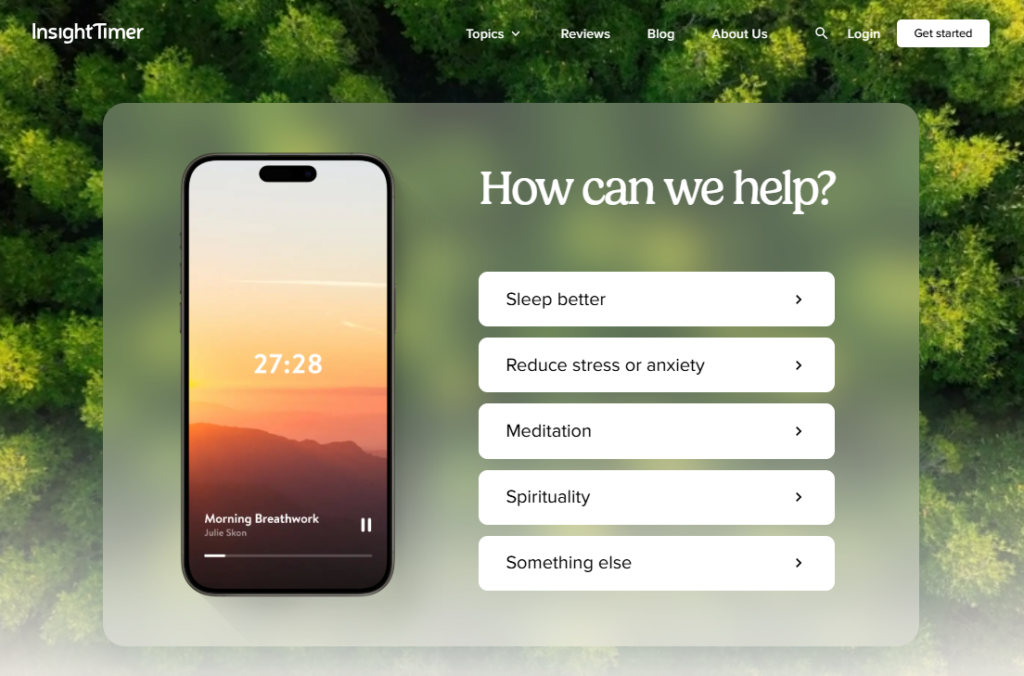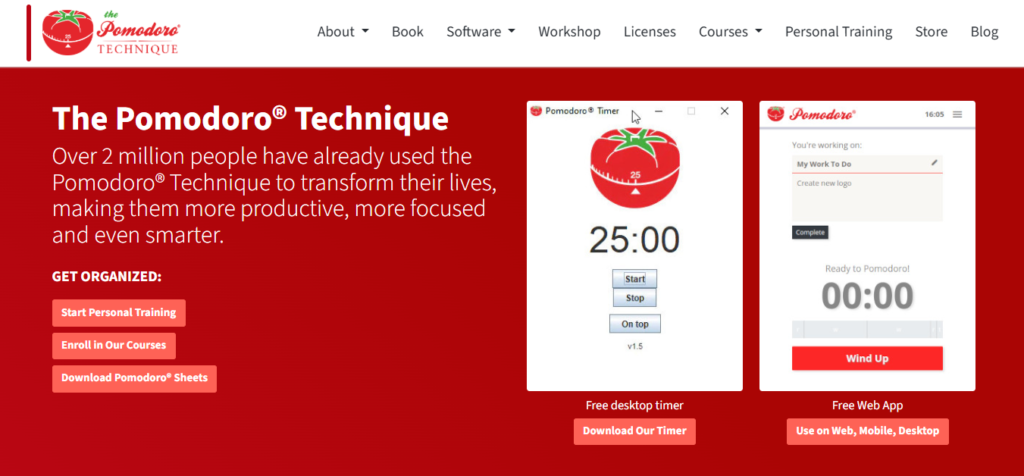For More Free Videos, Subscribe to the Rhodes Brothers YouTube Channel.
What if the secret to transforming your life was something so simple, so accessible, that you could start today in just two minutes? No expensive tools, no complicated routines—just you, your breath, and a moment of stillness. It might sound too good to be true, but for millions of people, including John S. Rhodes of the Rhodes Brothers YouTube channel, meditation has become a life-changing practice. As Rhodes puts it: “Meditation is self-care, not selfishness. It’s about mastering yourself so you can provide maximum value to others.”

Meditation isn’t just for monks or spiritual seekers—it’s for the overwhelmed parent, the busy professional, the student juggling deadlines. In this post, we’ll explore how even a few minutes of daily meditation can improve focus, reduce stress, and help you create a life of intention and balance. If you’ve ever longed for a sense of calm amid life’s chaos, keep reading—you’re about to discover a practice that will guide you there.
TL;DR
- Meditation is a simple yet powerful tool for self-mastery, requiring as little as two minutes a day.
- It helps build positive habits, boosts focus, and creates clarity for better decision-making.
- Meditation is more about consistency than perfection—just getting started is what matters.
- You’ll learn how to incorporate meditation into your routine, avoid common pitfalls, and use tools to track your progress.
- This practice can unlock creativity, gratitude, and even physical healing, making you more productive and present.
How Daily Meditation Transforms Your Life
Meditation isn’t just about sitting still and quieting your mind—it’s about creating space for intentional change in your life. When practiced consistently, even for just a few minutes a day, meditation can shift your mindset, improve your habits, and bring clarity to your daily choices. The beauty of meditation lies in its simplicity: it doesn’t require any expensive equipment or hours of commitment. All it asks is that you show up, breathe, and let the practice work its magic.
-
Building Positive Habits Through a Small Daily Practice
We’ve all heard the saying, “A journey of a thousand miles begins with a single step.” When it comes to meditation, that first step is simply committing to two minutes a day.
Rhodes shares how his meditation habit became the cornerstone of his morning routine, creating a domino effect for other positive habits, like journaling. By meditating early in the day, he found it easier to stay consistent and build momentum for the rest of his routine.
- Why it works: Meditation strengthens your “habit muscle.” Once you establish one small habit, like meditating, it’s easier to stack other habits on top.
- How to apply it: Start small. Download a meditation app like Insight Timer or Headspace to guide you through two-minute sessions. Pair meditation with another morning activity, like brushing your teeth or drinking your coffee, to make it automatic.

Pro Tip: Use tools like the Habit Tracker App or a simple journal to log your meditation streak. Seeing your progress over time will motivate you to keep going.
-
Improving Focus and Mental Clarity
One of the most significant benefits of meditation is its ability to improve focus. Rhodes emphasizes how meditation acts as a “reset button” for your mind, clearing the mental fog and helping you focus on what truly matters. Whether you’re an entrepreneur juggling multiple tasks or a student preparing for exams, meditation can help you prioritize and stay present.
Actionable Tip: When you meditate, focus on your breath. Each inhale and exhale acts as an anchor, pulling your attention away from distractions and back to the present moment.
Albert Einstein once said: “You cannot solve a problem with the same mind that created it.” Meditation helps you shift your mindset, creating space for fresh perspectives.
-
Finding Calm Amidst Chaos
Life is noisy. Between work, family, and social media, finding a moment of peace can feel impossible. But Rhodes discovered that meditation creates a pocket of silence—an opportunity to step away from the noise and recharge.
- How it works: When you meditate, you quiet the external world and turn your attention inward. This practice reduces stress, lowers your heart rate, and promotes relaxation.
Example: If you’re feeling overwhelmed, try a simple breathing technique: inhale for four counts, hold for four counts, and exhale for six counts. This method activates your parasympathetic nervous system, calming your body and mind.
-
Using Meditation to Heal and Recenter
Did you know that meditation can even help with physical healing? Rhodes shares how he uses meditation to focus on areas of his body that need attention, like a sore knee or tight shoulders. While the science behind this is still evolving, studies suggest that mindfulness practices can reduce inflammation and promote faster recovery.
- How to try this: During your meditation, visualize sending warmth and healing energy to the part of your body that feels uncomfortable. Whether it’s your knee, back, or neck, this focused attention can help you feel better—whether through placebo or genuine physiological effects.
- Tool Highlight: Apps like Calm offer guided body scans, which help you direct your awareness to different areas of your body for relaxation and healing.
-
Cultivating Gratitude and Emotional Resilience
Rhodes emphasizes that meditation isn’t just about calming the mind—it’s also about cultivating gratitude. By taking a few moments each day to reflect on what you’re thankful for, you shift your mindset from scarcity to abundance.
- Why gratitude matters: Gratitude has been shown to improve mental health, increase happiness, and strengthen relationships.
- How to practice gratitude meditation: After your two-minute meditation, spend 30 seconds thinking about three things you’re grateful for. These could be as simple as your morning coffee, a supportive friend, or the sunshine outside.
Example: Rhodes shares how gratitude helped him connect more deeply with his family. “When you take care of yourself through meditation, it’s easier to express love and kindness to those around you.”
-
Enhancing Productivity and Creativity
Meditation isn’t just about sitting still—it’s a powerful tool for unlocking creativity and boosting productivity. Rhodes explains how meditation helps him generate new ideas and approach challenges with a fresh perspective.
- How it works: When you meditate, you give your brain a break from constant stimulation. This mental “reset” allows your subconscious mind to surface creative solutions you might not have noticed otherwise.
- Example: If you’re stuck on a work project, try meditating for two minutes. You might be surprised by the insights that come to you afterward.

Bonus Tip: Pair meditation with a productivity method like the Pomodoro Technique. Meditate during your five-minute breaks to recharge and refocus.
Actionable Steps to Start Your Meditation Journey
Meditation is for everyone, no matter your age, lifestyle, or experience level. However, different people have different needs and challenges when starting their meditation practice. Below are actionable tips tailored to specific demographics, so you can begin your journey in a way that resonates with your unique life situation.
For Busy Professionals
If you’re constantly juggling deadlines, meetings, and emails, meditation can be a game-changer for managing stress and improving focus.
- Set a Clear Intention: Use meditation to decompress from work stress or prepare for a demanding day.
- Start Small: Take two minutes during your lunch break or between meetings to focus on your breath.
- Choose a Method: Try a focus meditation where you count each breath to center your mind. Apps like Calm have quick sessions designed for busy schedules.
- Use Tools: Set a notification or reminder on your phone to meditate at the same time daily, such as before your morning coffee.
- Track Your Progress: Use a digital tool like Insight Timer to log your streak and see how many minutes you’ve meditated over time.
Pro Tip: Meditate before or after work to create a clear boundary between your professional and personal life.
For Parents
Parenting is rewarding but overwhelming. Meditation can help you stay calm and present, even in the chaos of daily life.
- Set a Clear Intention: Meditate to increase patience, reduce stress, and show up as the best version of yourself for your kids.
- Start Small: Meditate for two minutes during nap time or right after the kids go to bed.
- Choose a Method: Guided meditations with affirmations like “I am calm” or “I am patient” can be particularly helpful.
- Use Tools: Try kid-friendly meditation apps like Stop, Breathe & Think Kids to incorporate mindfulness into your family routine.
- Track Your Progress: Use a family calendar or habit tracker to mark the days you’ve meditated. Involve your kids in marking your streak to build accountability.
Pro Tip: Practice mindfulness with your children. Teach them simple breathing exercises to calm down during tantrums or stressful moments.
For Students
With exams, assignments, and social pressures, students often feel overwhelmed. Meditation can help improve focus, reduce anxiety, and boost memory.
- Set a Clear Intention: Use meditation to improve focus during study sessions or reduce stress before exams.
- Start Small: Take two minutes to meditate before starting your homework or studying.
- Choose a Method: Try a body scan meditation to release tension and refocus your energy. Apps like Headspace offer short sessions for students.
- Use Tools: Use noise-canceling headphones and apps like Relax Melodies to block distractions during meditation.
- Track Your Progress: Keep a small journal and note how meditation affects your focus, grades, or stress levels over time.
Pro Tip: Pair meditation with the Pomodoro Technique (25-minute study blocks followed by short breaks). Meditate during the breaks to recharge your mind.
For Seniors
For older adults, meditation is a gentle way to enhance mental clarity, reduce stress, and even manage physical discomfort.
- Set a Clear Intention: Meditate to improve relaxation, manage pain, or maintain mental sharpness.
- Start Small: Begin with a few minutes of mindful breathing in a comfortable chair or lying down.
- Choose a Method: Explore loving-kindness meditation to cultivate gratitude and emotional well-being. Apps like MyLife Meditation are beginner-friendly for seniors.
- Use Tools: Use a simple kitchen timer or a meditation app with large, easy-to-read fonts.
- Track Your Progress: Keep a physical notebook to log your practice. Reflect on how meditation makes you feel each day.
Pro Tip: Join a meditation group or community center class to stay social and motivated.
For Beginners (All Ages)
If you’re completely new to meditation, the key is to keep things simple and approachable.
- Set a Clear Intention: Start meditating to cultivate mindfulness, reduce stress, or simply try something new.
- Start Small: Meditate for just two minutes a day. Consistency is more important than duration.
- Choose a Method: Begin with guided meditations to help walk you through the process. Apps like Headspace or Insight Timer are perfect for beginners.
- Use Tools: Use a timer or app to set a clear start and end to your session, so you don’t have to worry about watching the clock.
- Track Your Progress: Use stickers, checkboxes, or an app to mark each day you meditate. Seeing your streak grow is incredibly motivating!
Pro Tip: Don’t worry about “doing it perfectly.” It’s normal for your mind to wander—just gently bring your focus back to your breath.
For Athletes
Meditation can help athletes improve focus, reduce performance anxiety, and recover faster from intense workouts.
- Set a Clear Intention: Meditate to sharpen your focus during games or to aid post-workout recovery.
- Start Small: Spend two minutes meditating after workouts to calm your nervous system.
- Choose a Method: Use visualization meditation to mentally rehearse your performance or breath-focused meditation to boost endurance.
- Use Tools: Apps like Primed Mind offer meditations specifically designed for athletes.
- Track Your Progress: Note how meditation affects your performance and recovery over time.
Pro Tip: Pair meditation with stretching or yoga to create a powerful mind-body recovery routine.
For Creatives
Whether you’re a writer, artist, or musician, meditation can help you overcome creative blocks and unlock fresh ideas.
- Set a Clear Intention: Meditate to spark creativity, reduce self-doubt, or find inspiration.
- Start Small: Dedicate two minutes before working on your craft to clear mental clutter.
- Choose a Method: Try open-awareness meditation, where you sit quietly and let your thoughts flow without judgment.
- Use Tools: Use background sound apps like Brain.fm or Noisli to create a calming atmosphere during meditation.
- Track Your Progress: Journal after meditating and note any creative ideas or breakthroughs that emerge.
Pro Tip: Meditate outdoors or in a new environment to stimulate fresh perspectives.
Common Mistakes to Avoid When Starting Meditation
Starting a meditation practice can feel both exciting and intimidating. While the benefits are profound, it’s easy to stumble into pitfalls that can derail your progress. The good news? These common mistakes are entirely avoidable with the right mindset and approach. Let’s break down some of the most frequent missteps and how to overcome them for a sustainable, rewarding meditation journey.
Trying to Be Perfect
The Mistake: Many beginners think meditation is about completely shutting off their thoughts or achieving a perfectly serene state of mind. When their mind inevitably wanders, they feel like they’ve failed and often give up.
Why It Happens: This misconception comes from the way meditation is often portrayed—as a mystical experience where your mind is utterly still. In reality, meditation is about observing your thoughts, not erasing them.
The Fix: Shift your mindset from perfection to presence. The goal isn’t to clear your mind but to be aware of where your thoughts go and gently bring your focus back to the present moment. Every time your mind strays and you refocus, you’re strengthening your mindfulness “muscle.”
Key Insight: “Meditation is not about stopping thoughts, but recognizing that you are not your thoughts.” — Jon Kabat-Zinn
Practical Tip: When your mind wanders (and it will), simply notice it without judgment. Say to yourself, “Oh, there’s a thought,” and gently guide your focus back to your breath or chosen anchor. Think of it as a practice in patience rather than perfection.
Skipping Days
The Mistake: Many people start strong but lose momentum after a few days or weeks. They skip a session, feel guilty, and gradually let the practice fade away.
Why It Happens: Life gets busy, and meditation can feel like another task on an already packed to-do list. Additionally, many beginners underestimate the importance of consistency, thinking longer, sporadic sessions are more impactful than shorter, regular ones.
The Fix: Consistency matters more than duration. Meditating for just one or two minutes every day is far more effective than doing a 30-minute session once a week. By making meditation a daily habit, it becomes a natural part of your routine, like brushing your teeth.
Key Insight: According to a 2023 study in Mindfulness Journal, consistency in meditation (even as little as 5 minutes daily) leads to greater stress reduction and emotional resilience than infrequent, lengthy sessions.
Practical Tip:
- Use the “two-minute rule” to make meditation non-negotiable. Even if you’re busy, commit to two minutes of mindfulness. You can always extend the session if time allows, but starting small ensures you’ll never skip a day.
- Set a specific time for your practice, such as immediately after waking up or before going to bed, to establish the habit.
Tools to Help You Stay Consistent:
- Use meditation apps like Headspace or Insight Timer to set daily reminders.
- Track your streak using apps like Streaks or even a physical calendar. Reward yourself for hitting milestones, like meditating for 7 or 30 consecutive days.
Overcomplicating It
The Mistake: Beginners often think they need a perfect environment to meditate—complete silence, a cushion, incense, or even a serene mountaintop. This creates unnecessary barriers to starting and leads to procrastination.
Why It Happens: Social media and pop culture often depict meditation as a ritualistic or elaborate practice, making it seem inaccessible to the average person.
The Fix: Meditation is one of the most flexible practices you can adopt. You don’t need any special equipment, a dedicated meditation room, or a long stretch of uninterrupted time. You can meditate wherever you are—on the bus, at your desk, or even in your car (not while driving, of course!).
Key Insight: Meditation is about building awareness, not creating the perfect setup. The best meditation is the one you actually do, regardless of where or how.
Practical Tip:
- Start wherever you are. If you’re feeling stressed at work, take a two-minute breathing break at your desk. If you’re waiting in line at the grocery store, close your eyes (or soften your gaze) and focus on your breath.
- If noise is an issue, try using noise-canceling headphones or playing white noise through apps like Noisli or Rainy Mood.
Real-Life Example:
John S. Rhodes shares how he often meditates in less-than-ideal situations, like a busy airport or a noisy household, and still reaps the benefits. As he puts it: “Meditation isn’t about escaping your environment—it’s about finding peace within it.”
Expecting Instant Results
The Mistake: Many beginners expect to feel calmer, happier, or more focused immediately after starting meditation. When they don’t notice dramatic results right away, they become discouraged and quit.
Why It Happens: We live in a world of instant gratification, and when meditation doesn’t deliver quick, tangible results, it can feel like it’s “not working.”
The Fix: Treat meditation as a long-term investment in your mental and emotional health. Benefits like reduced stress, improved focus, and greater emotional resilience build over time with consistent practice.
Key Insight: According to a 2024 meta-analysis in Frontiers in Psychology, most people begin to notice significant improvements in emotional well-being after 6-8 weeks of daily meditation.
Practical Tip:
- Reframe your expectations. Instead of focusing on immediate results, approach meditation as a practice of “showing up” for yourself. Trust that the benefits will come with time.
- Keep a journal to track subtle changes in your mood, focus, or stress levels over weeks or months.
Comparing Your Practice to Others
The Mistake: You might hear about someone meditating for 30 minutes every morning or achieving “profound insights” during their sessions. This can make you feel like your shorter sessions or distracted mind aren’t good enough.
Why It Happens: Social comparison is natural, especially with the rise of social media, where people often share their “perfect” meditation practices.
The Fix: Remember that meditation is deeply personal. There’s no “right” way to meditate, and everyone’s journey looks different. What matters is that you’re showing up and doing the practice in a way that works for you.
Key Insight: Meditation is not a competition. It’s about connecting with yourself, not measuring up to others.
Practical Tip:
- Avoid comparing your practice to others and focus on your progress. Reflect on how you feel after meditating rather than how long you meditated or how “deep” the session felt.
- If social media triggers comparison, consider taking a break or following accounts that inspire rather than discourage you.
Frequently Asked Questions
How long should I meditate as a beginner?
Start with two minutes a day. Once you feel comfortable, gradually increase the time to five or ten minutes.
What’s the best time to meditate?
Morning is ideal for setting a positive tone for the day, but evening meditation can help you unwind before bed.
Do I need a meditation app?
Not necessarily, but apps like Headspace and Calm can provide helpful guidance and structure.
What if I can’t stop my thoughts?
It’s normal for your mind to wander. Simply notice the thought and gently bring your focus back to your breath.
Can meditation help with anxiety?
Yes! Studies show that mindfulness meditation reduces symptoms of anxiety by promoting relaxation and emotional regulation.
Do I have to sit still?
No. Walking meditation or mindful movement, like yoga, can also be effective.
How do I stay consistent?
Pair meditation with an existing habit, like brushing your teeth, to make it part of your routine.
Can kids meditate?
Absolutely! There are apps and guided meditations designed specifically for children.
Is meditation a religious practice?
While some traditions incorporate meditation, it’s a secular practice accessible to everyone.
How soon will I see results?
Many people notice benefits within a few days, but long-term practice brings the most profound changes.
Unlock the Power of Daily Meditation
Meditation isn’t just about sitting in silence or chasing some distant idea of enlightenment. It’s about showing up for yourself every single day—even if it’s just for two minutes. As John S. Rhodes said, “Meditation is self-care, not selfishness. It’s about mastering yourself so you can provide maximum value to others.”
By starting small, staying consistent, and incorporating this practice into your daily routine, you can transform your life in profound ways. Whether you’re looking to build better habits, improve focus, find calm, or tap into your creativity, meditation is the key to achieving greater self-mastery. And when you invest in yourself through meditation, everyone around you—your family, your colleagues, your community—benefits, too.
If you found this article helpful, be sure to check out more actionable tips on the Rhodes Brothers YouTube Channel. Subscribe today for videos that will inspire and guide you on your journey to greater self-mastery. Thank you for joining us, and happy meditating!
Resource List
Books
- Atomic Habits by James Clear
- The Miracle of Mindfulness by Thich Nhat Hanh
- 10% Happier by Dan Harris
Apps and Tools
Podcasts
Courses
YouTube Resources





